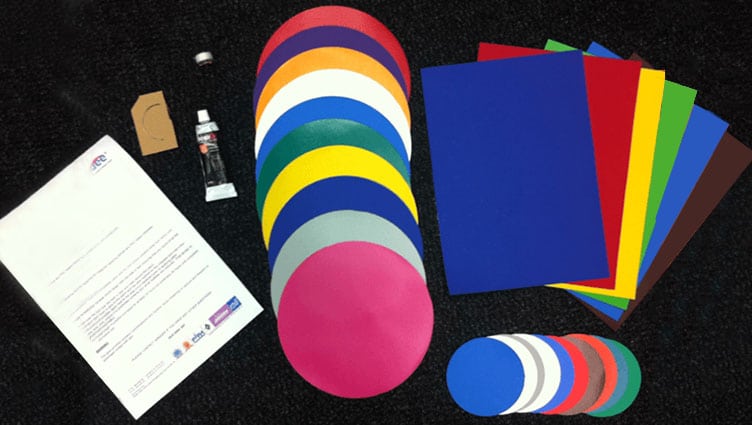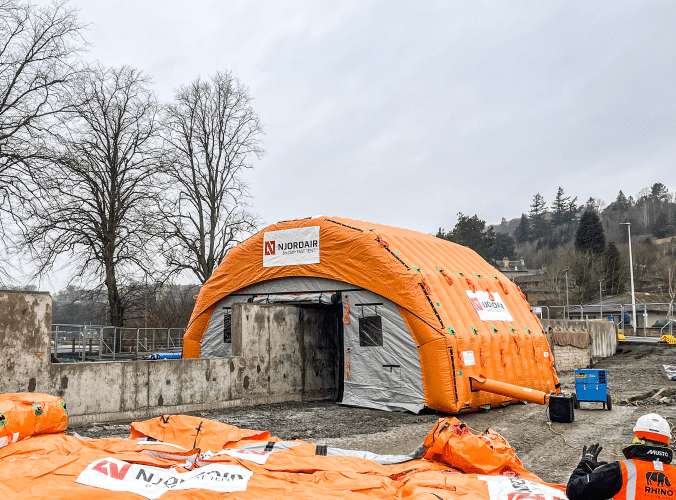How should an inflatable building be anchored?
Your air building will be fitted with low level, mid-level and high level anchor points.
Using stakes to anchor a building
The stakes need to be positioned so that the ropes or webbings go upwards from the stake towards the air building at between 30 and 45 degrees. Moving the stake closer to the air building makes the angle bigger, moving it away makes the angle smaller. The stakes should protrude no more than 25mm above the ground.
Whenever it is necessary to have anchorage points near to an entrance/ exit, they should be connected in such a way as to minimise the danger of tripping, abrasion or other injuries.
Temporary anchoring and inflation
The windward side of the infatable will need to be temporarily anchored while it is inflated for the first time; drive anchor- stakes into the ground on the windward side and loosely tie on the windward side ropes. Provided your stakes are the industry standard 16mm x 38cm
long, there should be no chance of driving them into any underground services. However, you should check that there are no obvious signs of excavation for cable runs, pipes etc. Check with your contact/client for the location regarding any underground services before driving the stakes in. If ropes form part of the anchorage system, attach them to the anchor-points.
On hard standing, you will be unable to anchor with stakes driven into the ground. Each anchor point must be attached to something which will withstand a force of 165kg. This can be weights or sandbags or even vehicles provided they are immobilised and under your control, or fittings already in the ground.
Switch on the fan and allow the air building to fully inflate. Check around the Air Building to make sure that it does not come into contact with any obstructions. Please be aware that if connected, THE 2 SECTIONS NEED TO BE INFLATED TOGETHER AT THE SAME TIME.
Watch the temporary anchorages you have connected in case they are positioned wrongly and pull tight. If they do pull tight, quickly switch off the fan and re- position either the air building or the stake, or loosen the rope. When the air building is fully inflated, you can push or pull it into its correct position using the anchors.
Final adjustment checks and permanent anchoring
When the air building is fully inflated, even a large air building can be pulled round by its anchorage points (with help) to adjust to its final position. The ropes to the pegs or other means of anchorage should be loosened off before the air building is pulled round, and then re-adjusted or re-tied accordingly. Make sure that you have enough help to pull the air building round without risk of hurting or straining yourself. The air building can be moved while still inflated, however the fan should be moved with the air building, or it should be switched off while the air building is being moved. If using a petrol fan stop the engine.
When the air building is in its final position the anchorage points must be pegged or tied down and then re-checked (if using a steel mallet, eye protection must be worn). You must use every anchorage point on the air building, their number and positioning has been calculated for each individual air building. Drive an anchor-stake into the ground foR each remaining anchorage point and securely connect any high level anchor ropes. The temporary anchorages may need to be repositioned.
Using ballast to anchor a building
It is important that a Fast Tent is properly anchored to withstand any wind loadings. If stakes / pegs cannot be used, such as when installed on a hard standing, water filled ballast or concrete blocks must be used.
When using ballast weights, the operator will have to consider a weight of at least 160kg (352.7 lbs.) for EACH outside anchor point (lower or upper). If the operator wants to connect multiple anchor points to the same ballast, the weight of it has to be AT LEAST the number of connected anchor points multiplied with 160kg.






